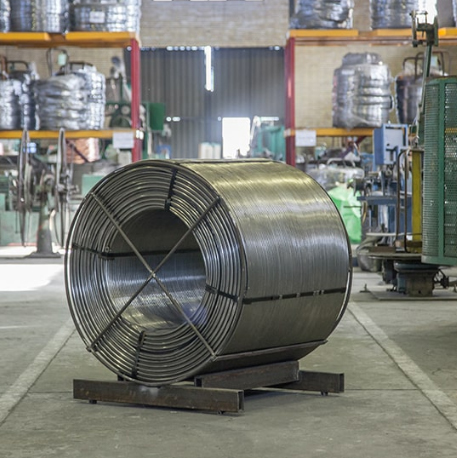
The presence of calcium in steel has a significant influence on its microstructure, which in turn affects the mechanical properties and overall performance of the material. Calcium can modify the grain structure, refine precipitates, and control the distribution of phases in steel. This article explores the impact of calcium on steel microstructure and highlights its role in enhancing mechanical properties and performance.
Calcium addition in steel promotes grain refinement, leading to improved mechanical properties. Calcium reacts with oxygen and nitrogen, reducing their solubility in the steel matrix. This results in the formation of fine oxide and nitride particles that act as nucleation sites for grain growth. The finer grains obtained through calcium-induced grain refinement enhance strength, toughness, and fatigue resistance of the steel.
Calcium also plays a crucial role in controlling the formation and distribution of precipitates in steel. By forming complex compounds with various alloying elements, calcium helps to control the size, morphology, and distribution of precipitates. Precipitate control is essential for achieving desired mechanical properties, such as strength and hardness, as well as improving resistance to wear and deformation.
The presence of calcium can modify the behavior of grain boundaries in steel. Grain boundaries act as barriers to dislocation movement, affecting the material's mechanical properties. Calcium can segregate to grain boundaries, impeding dislocation motion and enhancing grain boundary strength. This effect is particularly important in high-strength steels, where calcium segregation at grain boundaries improves strength and resistance to brittle fracture.
Calcium influences the stability and transformation of austenite, the high-temperature phase of steel. By reducing the austenite stability, calcium promotes the formation of ferrite and other desired microstructural phases during cooling and solidification. This controlled phase transformation enhances the strength and toughness of the steel. Additionally, calcium can inhibit the formation of undesirable phases, such as proeutectoid ferrite, resulting in more homogeneous microstructures.
The presence of calcium can modify the formation and morphology of carbide precipitates in steel. Calcium combines with carbon to form calcium carbides, which have a fine and dispersed morphology. The presence of calcium carbides can inhibit the growth of other undesirable carbides, such as cementite. This refinement of carbide precipitates contributes to improved mechanical properties, including increased hardness and wear resistance.

Calcium interacts with various alloying elements in steel, influencing their behavior and microstructural effects. For example, in low-alloy steels, calcium can form stable complex compounds with sulfur, reducing the detrimental effects of sulfides on mechanical properties. Calcium can also interact with other alloying elements, such as aluminum or titanium, influencing their precipitation behavior and contributing to the formation of desirable microstructures.
The influence of calcium on steel microstructure is crucial for achieving desired mechanical properties and enhancing overall performance. Calcium promotes grain refinement, controls precipitate formation, modifies grain boundaries, and influences phase transformations. By understanding and harnessing the impact of calcium on steel microstructure, manufacturers can optimize steel formulations, tailor material properties, and deliver high-quality steel products with superior mechanical performance.

Write a Message